Here is the Volume 6 of Curling from When you watch something, visit us first! Ms. Mika MATSUZAWA, who represented Japan in Curling at the 19th Olympic Winter Games in Salt Lake City, USA, 2002, told us about the variety of Shots of Curling this time. This is the combined version of Part 6-1 through 6-3 on our YouTube channel.
In Vol.5, we learned about when the players aim for “Steal” during a Curling game.
This time, Ms. Mika MATSUZAWA, who represented Japan in Curling at the 19th Olympic Winter Games held in Salt Lake City, USA, in 2002, told us about variety of Shots of Curling game.
I think you will understand how Curlers (Curling players) think about competing.
.png)
Part 6-1: Stone movement
Action when a stone hits another stone
When a stone hits another stone, the hit stone goes to the direction it was hit. And the thrown stone will go to the 90 degrees from the direction it hits another one, so it is important to watch the angle at which the thrown stone hits.

Stone rotation and Sweep
As Curling is called “Chess on the Ice,” players build tactics up by placing stones like this, as I am doing now on this board, but when they aim to place a stone here, is it possible for them? It is quite difficult to place a stone as they want. In fact, it is roughly 40 meters from the place where the stone is thrown to House on the other side.
Among such distance, players control the stone by two factors: the rotation and the speed of the stone, and as for rotation, first is clock-wise turn, called “In-turn.”
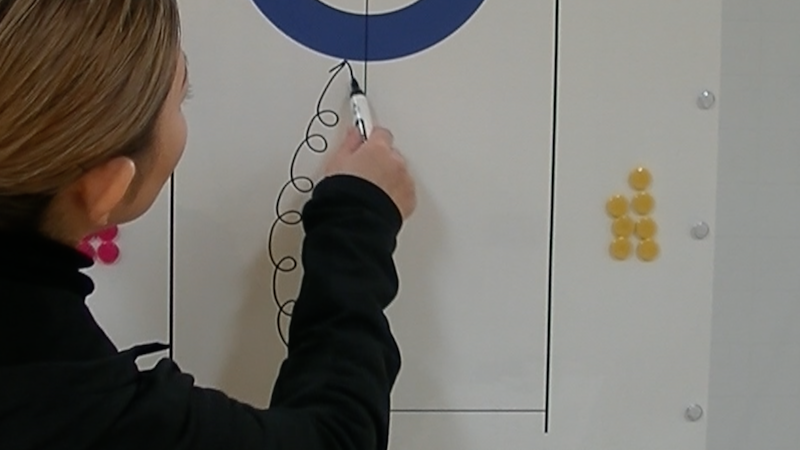
Rotation advancing like this, and the other is a counter clock-wise rotation called “Out-turn.” Like this.
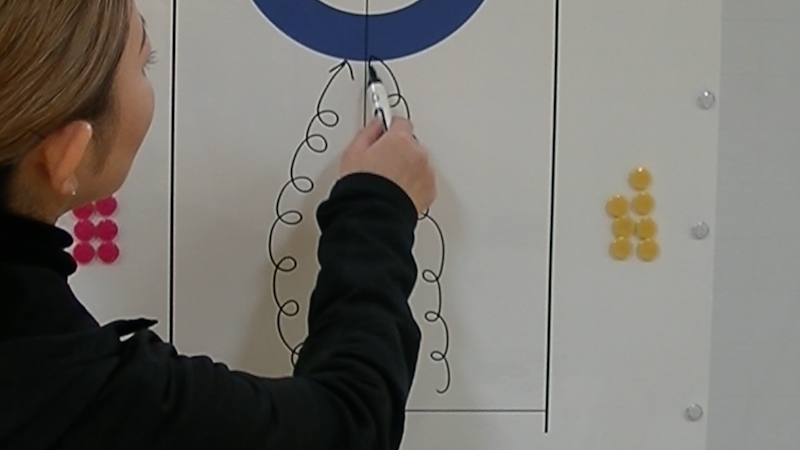
Stone advances while rotating like this, but how many times it rotates must be stable to some extent or the stone will not go in the same path, or, if the player releases the stone without much rotation, the stone will curl too much, therefore, players tries to control stones, but if the rotation varies, stones will not go to the same point.
So, players have to throw stones with a steady rotation at the speed dictated by Skip so that they make the shot, and, in Curling, the direction of the stone can also be controlled by Sweeping the ice with a brush after throwing the stone.
So, not only the skill of the throwing player, and in addition to the skill of the Sweeping players, Skip watches the stone coming from the other side, sees how the stone is advancing now, and gives instructions on whether to Sweep or not. For example, when the stone is rotating clockwise, i.e. In-turn, and there are two Sweepers

and will Sweep from both side, and if they do not want to curl the stone too much, the one who is facing the rotation Sweeps like this. There is the way to Sweep vertically like this, and it is said that if Sweeper Sweeps against the rotation, the stone will not curl.
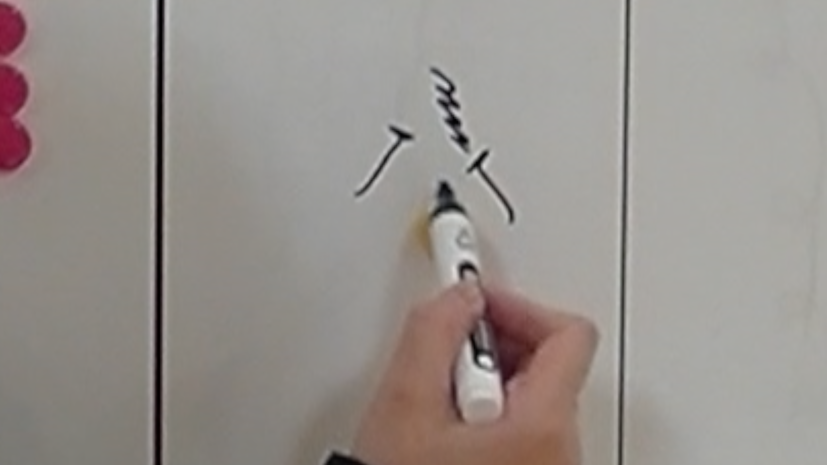
Conversely, when they want to make it curl, Sweep in this way from the same direction as the rotation. This makes the stone curl. The players will be able to curl the stone.
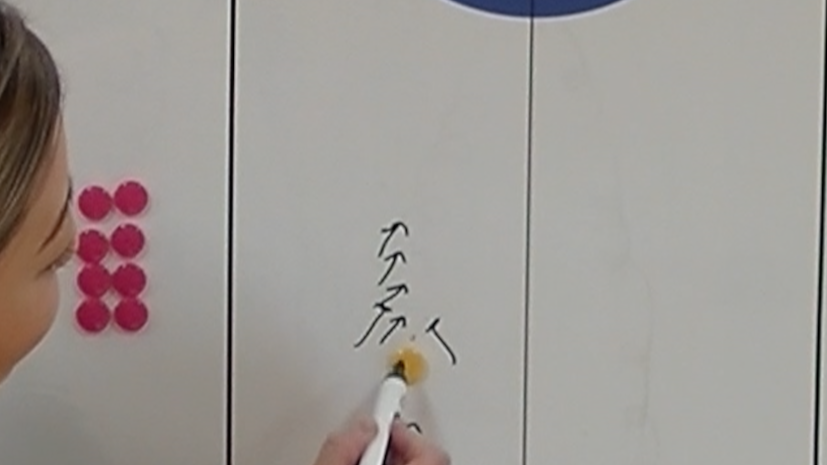
However, the curling also depends on when players Sweep in front of the stone. If they Sweep immediately after throwing, the stone will not curl that much because it is still going straight. There is a point at which the stone begins to curl after it has maintained going straight. It is called “Break Point,” and if Sweepers Sweep when the stone reaches at this point, the stone will firmly curl more than if it is not Swept. So it is not that players can Sweep to curl at any time, but it is important to Sweep to curl when the stone comes to the Break Point.
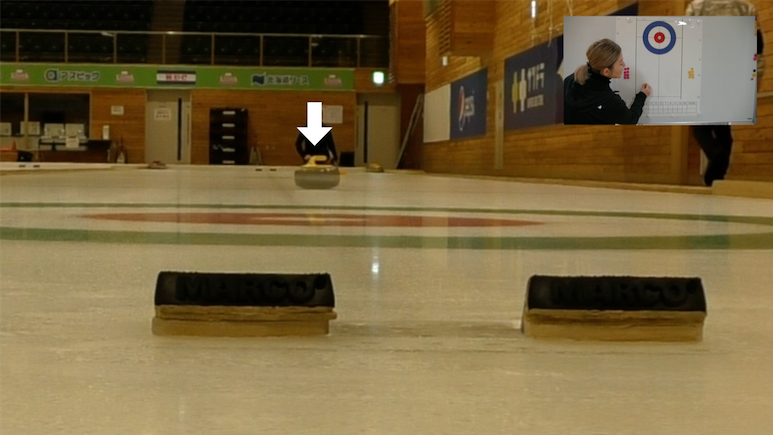
When you often hear players say “wait” in a game, it means that the stones have not yet reached the Break Point. When the stone reaches there, Skip calls out the name of the Sweeper in whose direction the stone is to curl and communicates, saying, “Sweep” or “Curl it”, and this is “wait,” meaning to wait for the Break Point. Waiting for Break Point is very important.
Part 6-2: Variation of Draw shots
Now, I would like to explain about each shots, which can be roughly divided into 2 types: Draw shots and Take out shots, and first, Draw shots.
Draw shot is a shot that delivers a stone to a desired place. Rather than simply throwing a stone and delivering it to the target point, this Draw shot is to a certain extent, the player throws a stone with a speed that comes to around this area, and then Sweepers bring it to the target point. Draw shot is a shot that surely delivers the stone to the desired point.
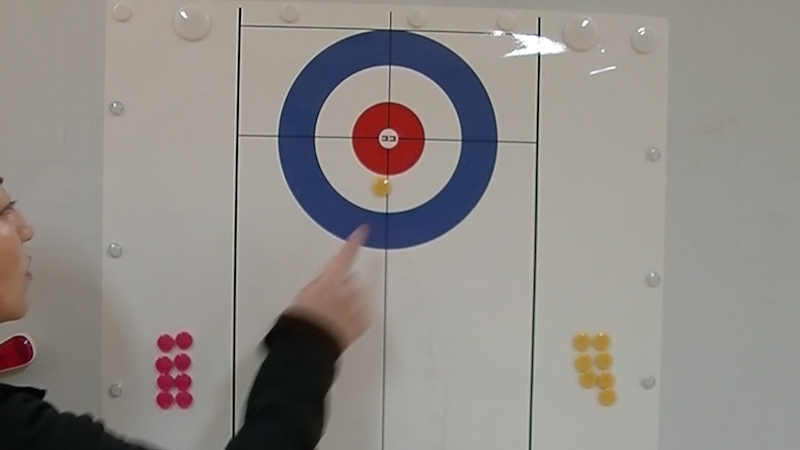
It is difficult for a throwing player to control the stone, but Sweepers will bring the stone to the target with pinpoint accuracy, so the key for Draw shot is to throw the stone fast enough to Sweep and let Sweepers do the rest.
Besides Draw shot, there is a shot to place a Guard stone. This shot is also one of Draw shots. Guard stones are stones that are placed in front of House. A shot that places a stone in front of House to protect their own stone is called a Guard shot, and in some cases there are situations where a Guard stone is placed inside House.
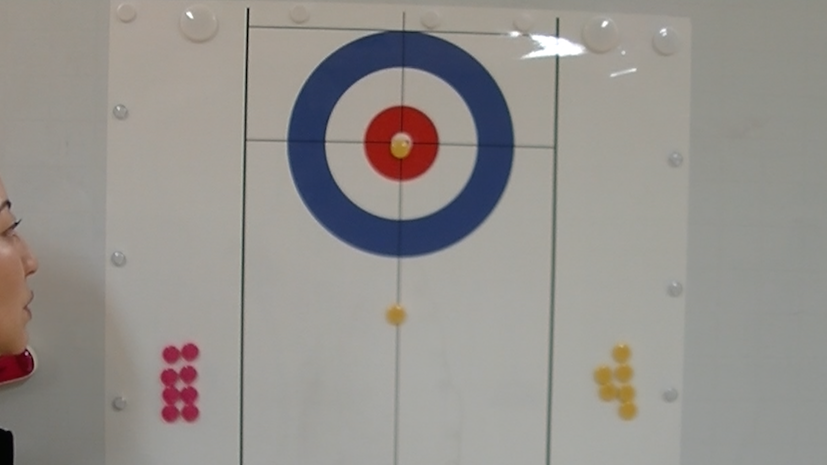
A shot where there is a Guard stone and a thrown stone goes to be hidden behind the Guard stone is called a Come Around. In the case of well “curl” ice condition, a shot where a thrown stone goes into behind the stone in House like this is also called Come Around. Come Around is another Draw shot, a shot that hides a stone behind the Guard stone.
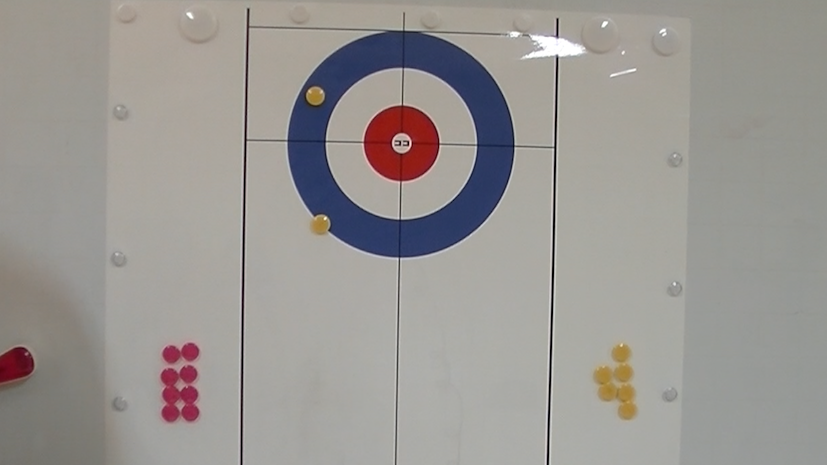
The point of this Come Around is the width of the curl of the shot. It is a very difficult shot because both the width of the stone curl and the speed of the stone must be appropriate.
A more difficult shot is Freeze. Freeze shot is also one of Draw shots, but it is desirable that thrown stone attaches tight to the opponent’s stone vertically. If necessary, it can also be attached the opponent’s stone diagonally.
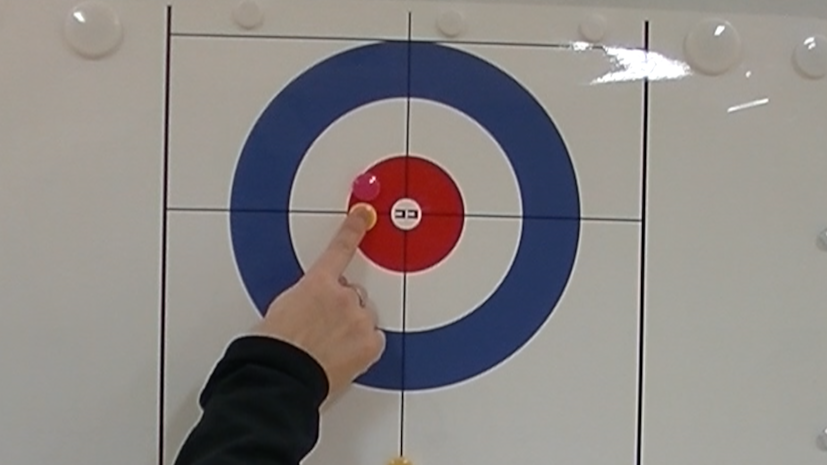
To attach the stone tight is very difficult, and this is done by Sweepers who determine how far the stone will advance and make a decision to Sweep or not, and by Skip who read the curl of the ice. Freeze is the most difficult shot in Draw shots because players have to make a judgment about how much ice condition is curling.
Part 6-3: Variation of Take out shots
Then, about the Take out shot. The purpose of the Take out shot is, of course, to take out the opponent’s stone in House. Hit and Stay. That a thrown stone stays after it hits an opponent’s stone is called “Hit and Stay,” and it is very important to make sure that the opponent’s stone is removed.
Make sure to take the opponent’s stones out and their own stone stays in House. This is the basic Take out shot.

And next. Hit and Roll. A shot that a thrown stone hits the opponent’s stone and then it hides behind a Guard stone, for example. It is called “Hit and Roll,” and this rolling looks easy, but actually it is quite difficult. The angle at which the stone hits is important. If the angle and the speed of the thrown stone when it hits the opponent stone are not appropriate, it will not be hidden completely behind the Guard stone.

So, for example, if a player throws a very fast takeout shot and it hits the opponent’s stone slightly, both stones would go out, but if the thrown stone is not too fast and it hits the same spot slightly, it can be hidden completely behind the Guard stone like this. Therefore, if the thrown stone is too fast, it will roll too much.
Then if the thrown stone is too slow, for example, it may not be able to take out the opponent’s stone. As a player must throw a stone in a speed that can take the opponent’s stone, have it hit the opponent’s stone at the appropriate angle and make it roll to the desired spot, so there are 3 things to consider, therefore, Hit and Roll is a bit of a difficult shot.
For example, this Hit and Roll to hit a stone that is slightly hidden behind this Guard stone is a slower Take out shot, so it needs to curl, to take out the opponent’s stone and to roll properly, so this Hit and Roll is technically difficult, but if the speed and hitting spot of thrown stone are appropriate, it is possible to stay after taking out. This is hit and roll.
Then, for example, nowadays there are often many Guard stones like this. You may see this a lot in Curling games, this is called Runback, a shot where a thrown stone hits the Guard stone and then takes out the stone in House.
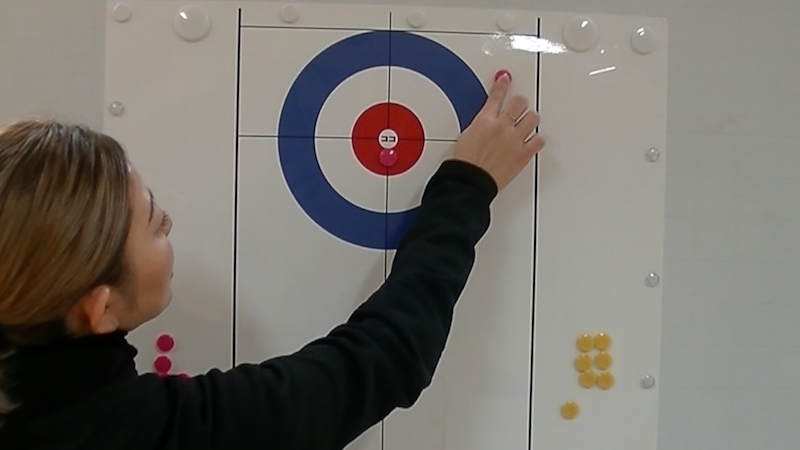
Yes, like this. As the Guard stone is the opponent’s stone, this is a pattern where both the Guard stone and the stone in House must be taken out.
For example, if the Guard stone is their own, they will have the thrown stone hit at the center of the Guard stone, and their stone will stay in House, hidden by new Guard, and the opponent’s stone will be removed. In Runback, the spot to hit depends on what color the Guard stone is, i.e., whether it is their own stone or the opponent’s stone.
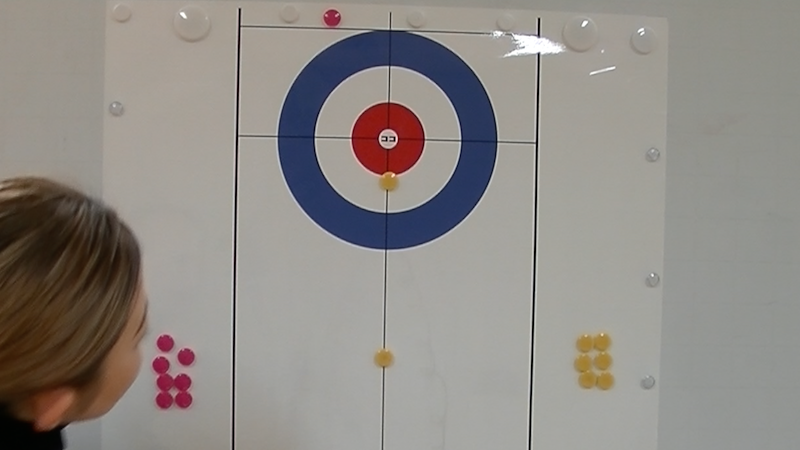
And, if the Guard stone is close to House, Runback is rather easy, and if that is far from House, it is more difficult. So this distance between the Guard stone and House is also related to the success rate of Runback.
And then, there is the Double Takeout, which I think is one of the most famous shots in Curling. Taking out 2 opponent’s stones at once. There is also this kind of shot.
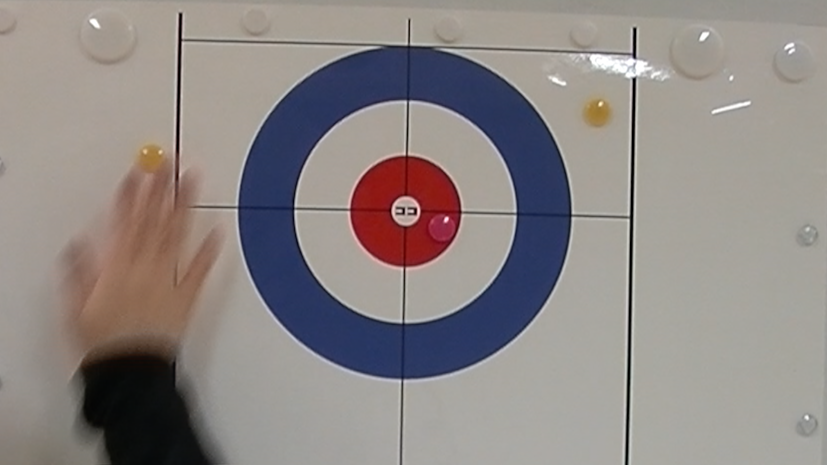
Of course, depending on the placement of the stones, it is Triple Takeout, as we often see these days. By taking out this opponent’s stone while this one takes out this one as well, Triple Takeout is possible.
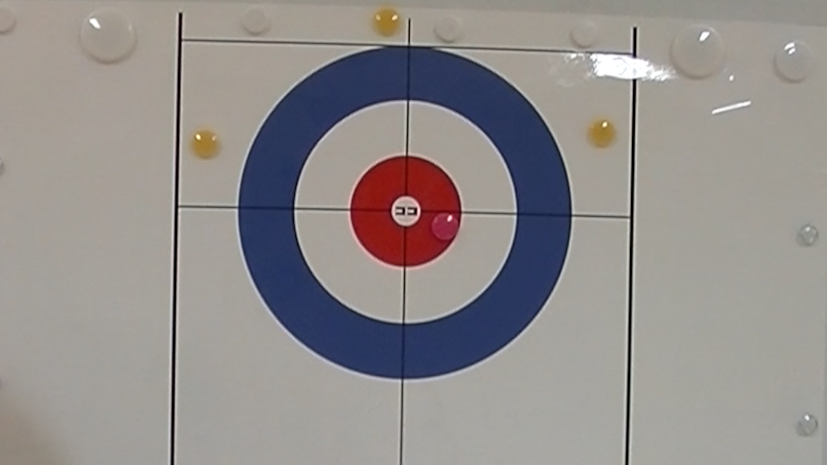
But, a player must throw a stone very fast, so the accuracy of shot is rather low, however, as a very fast thrown stone curls quite little, if players can find out the spot to hit and read the action of the stones well, they can make Triple Takeout with the little curl of thrown stone.
If the angle between these stones shallower, the point to be hit comes to the center of this stone, and the thrown stone must move to another stone, so the thrown stone must hit forcefully, therefore, in many case, men’s players can make such Double Takeout in shallow angle. I think this is one of the differences between the men’s and women’s game.
※Please also enjoy some appendices in the video!
Share this content:
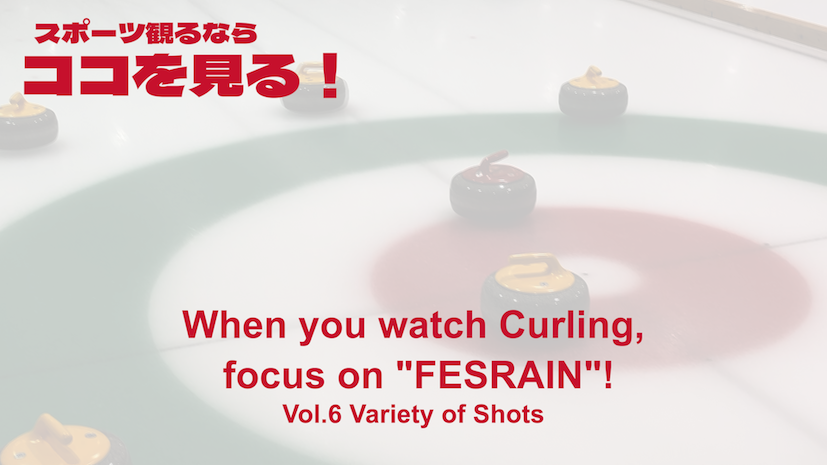
コメントを残す